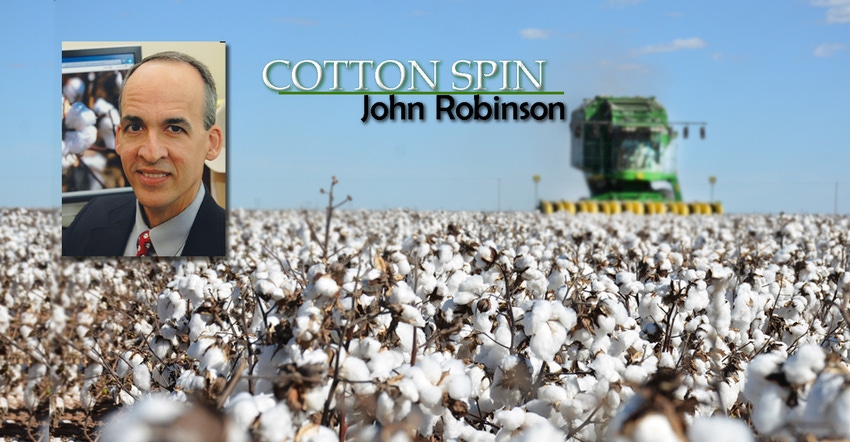
The USDA’s August cotton supply and demand estimates painted a bearish picture. The world number reflects a global excess supply of cotton. While world beginning stocks were 360,000 bales fewer compared to July, the August estimate of world production was 1.28 million bales higher, month over month. The latter resulted from higher production estimates in India (+1.2 million bales), the U.S. (+580,000 bales), and Australia (+200,000 bales). The world trade categories were reduced between 220,000 and 260,000 bales, while world consumption was 1.24 million fewer, all compared to July.
Higher production and reduced consumption resulted in 2.14 million more bales of new crop ending stocks on the world balance sheet, which is fundamentally bearish in terms of the monthly adjustment and in the resulting level of 104.91 million bales. These kinds of global numbers have the power to outweigh the effect of the U.S. situation, which itself isn’t market supporting.
USDA’s revisions to U.S. cotton started with carry-in adjustments. Some trimming of 19/20 exports resulted in 100,000 more bales of 20/21 carry-in, raising it to 7.2 million bales. This is perhaps the most fixed and bearish aspect of the new crop balance sheet. U.S. abandonment was predictably raised to 24% (that is the fourth highest in eleven years). However, abandoning a lot of dryland on the Southern Plains helped contribute to an increase in the national average yield per harvested acre (i.e., from 820 to 938 pounds per acre).
Those offsetting effects combined to increase U.S. new crop production from 17.5 million to 18.03 million bales. This is surprisingly high to most observers, but there it is for now. Some are questioning the production adjustment because it was mostly based on a farm manager survey of abandonment and yield, implemented via phone, mail, and internet.
Next benchmark
I have no reason to question the validity of the August survey. The next real benchmark estimate is in September when USDA will have boots on the ground sampling yield and abandonment across Texas, as well as Arkansas, Georgia, and Mississippi. This new information may revise U.S. production lower, or it may not.
On the demand side, U.S. mill use was lowered 100,000 bales while the estimate of exports was unchanged, month over month. The demand picture is historically weak, and unfortunately that may outlast the uncertain supply picture.
The bottom line of all this was a month-over-month increase in new crop ending stocks from 6.8 million to 7.6 million bales. The resulting stocks-to-use ratio likewise shifted higher above the burdensome 40% threshold level, which is fundamentally bearish according to history and economic theory.
Again, some will question whether the ending stocks will really be that high. The implication is that prices should, and possibly will, be higher. But there is really no such thing as “prices should.” Prices are. I think the cotton futures market currently reflects the influence of potentially higher abandonment in the Southern Plains. I think USDA could cut a million bales off their current production and ending stocks, and the outlook would still be fundamentally bearish. I think the mid-60s is the post-pandemic market high for the Dec’20 contract.
For additional thoughts on these and other cotton marketing topics, please visit my weekly on-line newsletter at http://agrilife.org/cottonmarketing/.
About the Author(s)
You May Also Like




